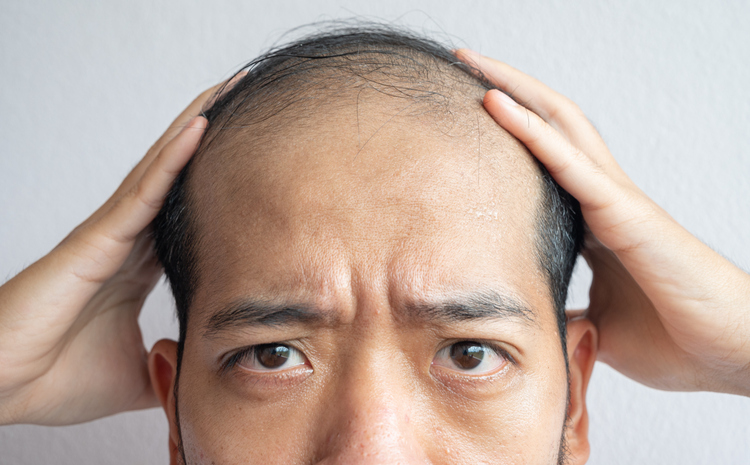 |
| Finasteride, a hair loss drug, may be causing MGD in some patients. Photo: Getty images. |
In an effort to characterize dry eye disease (DED) in patients taking finasteride, a potent targeted anti-androgenic medication, researchers recently found an association between usage of the drug and meibomian gland dysfunction (MGD), in addition to conjunctival and corneal abnormalities. They noted that the androgen-sensitive meibomian glands may be altered in those taking anti-androgen medications, especially finasteride, given its unique potency and targeted effects compared with other anti-androgenics. The team presented the full scope of their findings yesterday at the ARVO 2022 conference in Denver.
The extended case series had a mean follow-up period of 55.3 months. It included a retrospective chart review of 116 DED patients on finasteride seen in the Scheie Eye Institute Dry Eye Clinic at the University of Pennsylvania from 2005 through 2021 (average age: 67.9, 95% male, 86% Caucasian). Patient demographics, diagnosis, prior treatment, questionnaire data and DED clinical exam outcomes were extracted. The researchers performed statistical analysis to assess clinical characteristics and Ocular Surface Disease Index (OSDI) scores among patients on varying doses of finasteride (23 patients were taking 1mg or 2.5mg, and 93 were taking 5mg).
When comparing exam findings during the initial and follow-up exams, the latter visit saw a significantly greater percentage of patients present with MGD (62.9% vs. 85.3%), conjunctival abnormalities (21.1% vs. 41.9%) and corneal abnormalities (26.3% vs. 40.5%). Mean OSDI score was 24.4 and was slightly higher in patients taking 5mg of finasteride, though this was not statistically significant. Low-dose finasteride use was significantly associated with a greater frequency of cyclosporine use at the first (26.1% vs 6.5%) and last exams (25% vs. 3.4%). Otherwise, treatment modalities were no different between the low- and high-dose groups.
“To our knowledge, this represents the largest demographic study over 15 years of DED patients on finasteride,” the study authors concluded in their paper. “This study reinforces the importance of considering the long-term effects of finasteride use on DED as part of the systemic sequelae of androgen depletion and provides anticipatory guidance for patients and ophthalmologists.”
Original abstract content © Association for Research in Vision and Ophthalmology 2022.
Nguyen B, Meer E, Gupta A, et al. The effect of finasteride on dry eye disease. ARVO 2022 annual meeting. |

